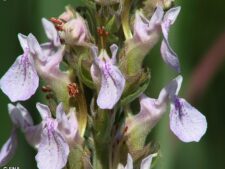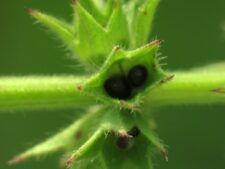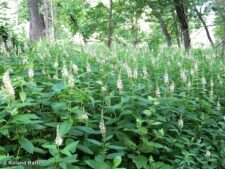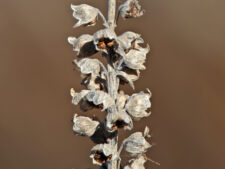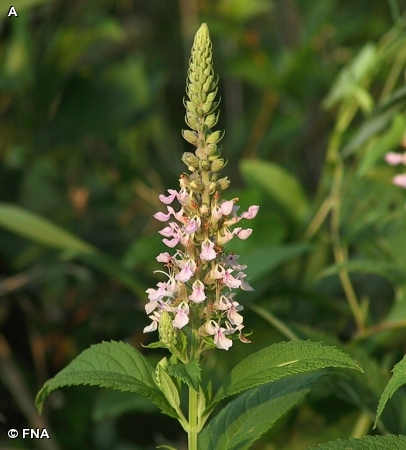
This native perennial has erect, square stems up to 3 feet tall. It may occur as a single plant, but its creeping underground stems (rhizomes) often spread to form large colonies (D). Lance-shaped leaves which are opposite on the stem have prominent veins and toothed margins (A). The lavender flowers are arranged in terminal spikes (A). Individual flowers in the Mint Family typically have well defined upper and lower lips. Like other mints, which have well developed upper and lower lips, Germander has a well developed lower lip, but the upper one is absent. It has been replaced by two ear-like projections extending up from the sides of the lower lip (B). At the base of the flower is a green, cup-shaped calyx with 5 coarse triangular teeth which, at maturity, holds 4 black seeds (C,E).
Grows in sunny or shady moist woodlands, wetlands and meadows flowering from June through August. It is common in woodlands at Fontenelle Forest and in woodlands and prairie restorations at Neale Woods.
The absent (or split) upper lip is a good identifier, separating Germander from other Mint Family look-alikes, particularly the Hedge Nettles which have an intact upper lip. A close look at the flower shows 2 ear-like projections extending up from the sides of the lower lip which always suggests to the writer that Germander simply traded a fat upper lip for 2 big ears.
A leaf tea was used in traditional medicine for a variety of ailments. It tends to be avoided by grazing animals because of its bitter taste.
Other common names include American Germander and Wood Sage.
The content of NatureSearch is provided by dedicated volunteer Naturalists of Fontenelle Forest who strive to provide the most accurate information available. Contributors of the images retain their copyrights. The point of contact for this page is: Roland Barth.

 Identification
Identification